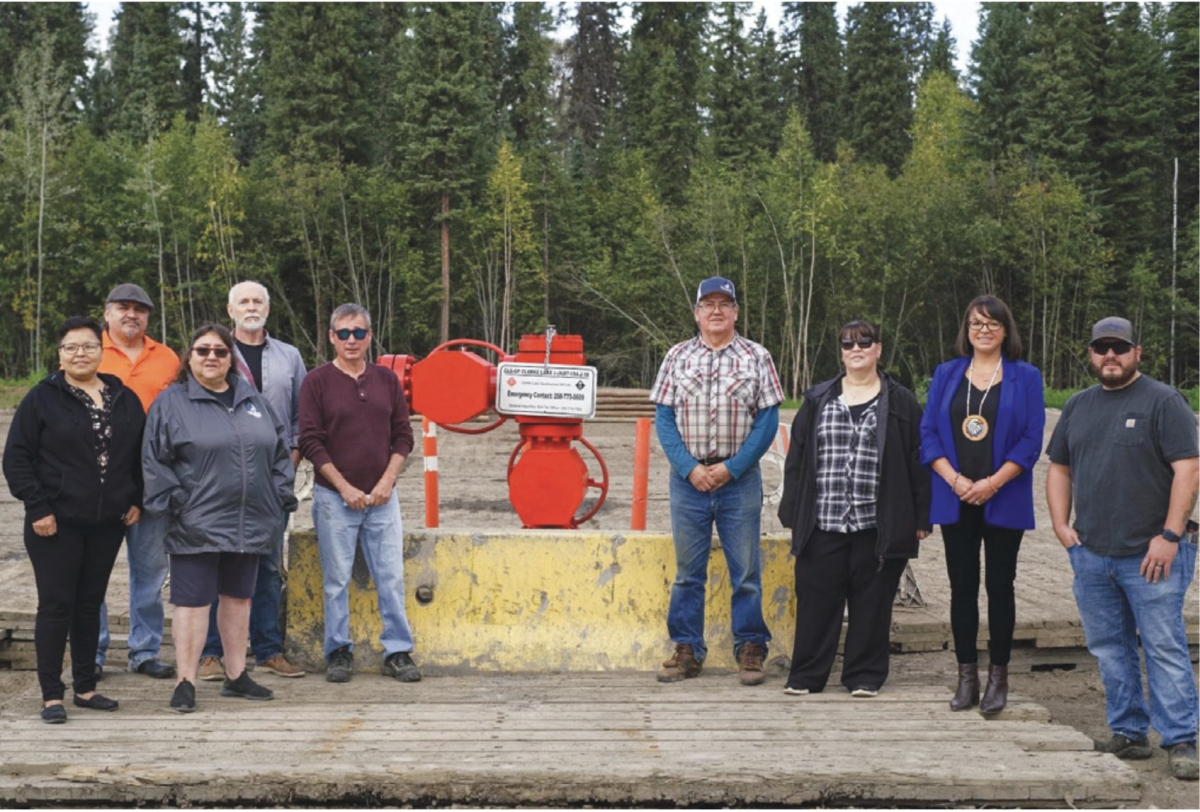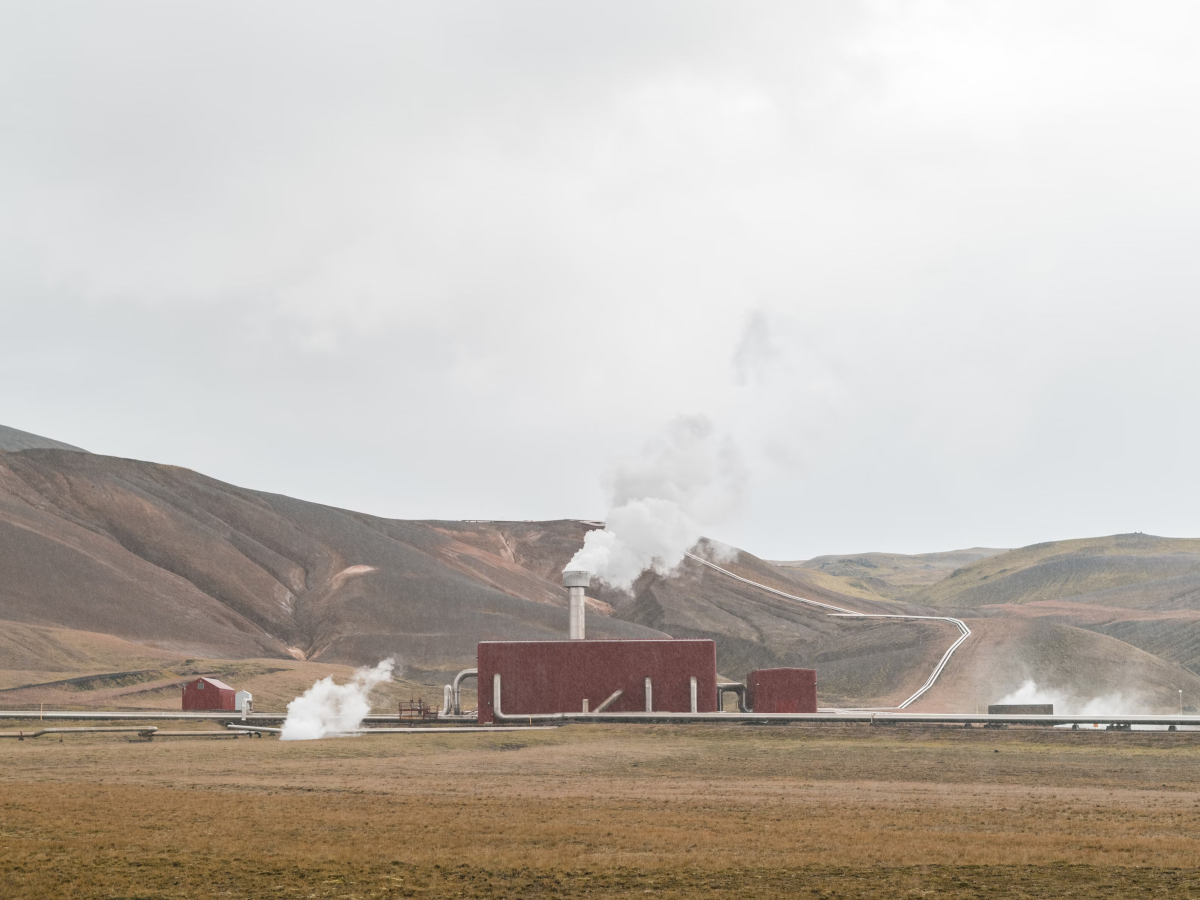Support strong Canadian climate journalism for 2025
Elders and community members always knew something was bubbling under their feet on this remote B.C. First Nation territory.
Long before contact, the hot springs throughout Fort Nelson territory were a source of healing, hygiene and rest for the Dene in what is now called northern British Columbia.
In those early years of contact, during western expansion, there are stories of the local Dene teaching colonial explorers the benefits of hot mineral water for good hygiene. Now, not much has changed. Lodges and camping areas have been established across the province’s north, as tourists and locals escape for weekend spa getaways.
“We have been harnessing this energy since time immemorial,” said Taylor Behn-Tsakoza. She’s the community liaison for Tu Deh-Kah, an Indigenous-led geothermal project in the region, tasked with getting the community onboard with the initiative.
“Tu Deh-Kah” is a Dene phrase for boiling water, Behn-Tsakoza explained.

Fort Nelson is oil country, with pipelines snaking through the territory where, in the dead of winter, temperatures can drop below 40 C.
“Our people would notice that something was happening underground because, where the pipeline would be, you could see the green grass, and then like four or five feet of snow [beside it],” said Sharleen Gale, the Chief of the First Nation.
It’s why, in 2009, the First Nation’s leadership secured a grant to launch a feasibility study to verify what Fort Nelson elders knew: there was an opportunity to harness the power of the Earth’s heat to provide and steward Fort Nelson’s prosperity into the future.
Now, a depleted oil and gas well has been chosen to be transformed into a renewable, and 100 per cent Indigenous-owned, geothermal energy facility. The plant is set to help power the First Nation and create economic ventures to support northern B.C., the Northwest Territories and Alberta.
The project also charts a new map for a possible renewable future for the oil and gas industry across what is known as the “Western Canadian sedimentary basin.” The geological formation is the kind of place where most of the world’s oil and gas is produced, including Alberta. The same process that turned organic material into fossil fuels also produces heat that can be captured for geothermal energy. In Fort Nelson, they are expecting around seven to 12 megawatts, Jim Hodgson, CEO of Deh Tai Corp., Fort Nelson’s economic development company, said.
The production is not as strong as volcanic heat-sourced geothermal, which sits at over 300 C and can produce over 450 megawatts; that’s the kind found in New Zealand, Iceland and Hawaii, Hodgson said.
Tu Deh-Kah could be an energy hub for the community's other economic projects powered by the geothermal facility. They include a spa, dozens of greenhouses and a drying facility for a biomass plant partially owned by the First Nation.
“The oil and gas pipeline helped serve our community for seven generations, and now we’ve been able to repurpose this field,” Gale said. Now, he hopes the geothermal plant can serve Fort Nelson for seven generations to come.
However, it wasn’t an easy transition to pitch for Fort Nelson denizens. Many Fort Nelson band members have grown up with the oil and gas industry as the economic driver for the nation since the 1950s, and many have worked in the industry — including Gale, who supported her family for over 20 years with a good-paying job at the local gas plant. Collectively, the band has developed economically thanks to strong leadership fighting for royalties.
It was long overdue. During boom times, Fort Nelson had the most millionaires per capita of any city in B.C., Gale said. Hundreds of oil wells were drilled across Fort Nelson First Nation’s ancestral territory, splotching the land with black gold. But the nation stood up and fought for royalties, so the community could benefit from the extraction they were never consulted on, Gale explained.
“Those agreements were set up, so it did help our community,” Gale told Canada’s National Observer. “And that's how we pulled a lot of our people out of poverty.”
Oil and gas remains the largest private employer of Indigenous people in Canada, with 10,800 Indigenous workers in the sector, according to the most recent data from Ottawa. Reliance on the fossil fuel industry led some band members to question whether a shift to geothermal energy was needed or possible. Some members questioned whether geothermal, a relatively new technology in Canada, had a future. Others questioned if climate change was even real.

“Change is really tough,” Gale said.
Behn-Tsakoza is sometimes teased at the grocery store or gas station by community members or elders skeptical of the work she’s doing. “Has the project failed yet?,” someone may ask.
But she stands tall and uses the moment to share news about breakthroughs in project design or engineering. “You just chip away at it,” she said.
The project’s timeline is helping. In 2025, the First Nation expects to start drilling, then building the facility by 2026, and commissioning it in 2027, Hodgson said.
It also helps that, when it comes down to it, oil and gas and geothermal look a lot alike, and use many of the same tools — and people.
Hodgson himself is an experienced oil and gas man who has worked in the industry for decades. He says the only technical difference between oil and gas and geothermal is that “you have a power generator.” The need for drilling and other jobs at the facility will easily be transferred from oil and gas experience for the 25 to 30 jobs the facility will produce for Fort Nelson citizens.
Construction will also bring opportunities for the nation-owned gravel pit and construction company. Welding companies owned by community members will be tapped for building the facility.
“All the expertise that already exists in our community is what we need for this project,” Behn-Tsakoza said.
The geothermal project is part of an emergence of First Nation leadership in Canada’s energy transition. In April, the First Nation Major Project Coalition released a new electrification strategy that positions Indigenous nations as key propellers of the energy transition. Tu Deh-Kah was highlighted in the report to show how Indigenous-led electrification can change a region’s outlook for the transition.
The organization is adamant that Indigenous nations must be included in the economics of the transition. Unlike the era when oil was first drilled in Fort Nelson, in the age of free, prior and informed consent, there’s new risk if Indigenous nations are not included at the decision-making table for major projects. Without consent, First Nations' opposition can cause projects to grind to a halt through courts, injunctions or media battles.
“Without the full participation of Indigenous people, it is hard to conceive of net zero projects being completed in time to meet net zero target timelines,” the report explains.
That’s why the speed of transition and Indigenous reconciliation are false choices for the coalition: both reconciliation and the energy transition can be expedited through Indigenous project ownership.
It’s why for Tu Deh-Kah, reconciliation is taking the form of ownership and decision-making, explains Behn-Tsakoza.
“Ownership for me is so big [for reconciliation]; us being in the driver seat should have been how it was done since the beginning,” said Behn-Tsakoza. “Tu Deh-Kah is showing industry how it should have been done.”
Matteo Cimellaro / Canada’s National Observer / Local Journalism Initiative







Comments
Volcanos in places like Iceland and New Zealand, but not Canada? I can look out my window and see Mt. Baker, part of a volcanic chain that goes up north through BC, together with rocks that are way hotter than oil field reservoirs. And then there is ocean geothermal too ...
Does Canada have any active volcanos. Not at the moment.
So using ground source heat is the way to go. Too bad Alberta has effectively banned it as the Conservative UCP government suggests under ground heat might spoil the view.